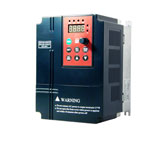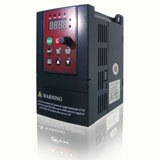VFD catch on fly
I have engineered a design way back in early 1990's. There are 2 methods, a) Catch on fly with current limit, here the VFD Starts from zero frequency, gets into current limit, at some point of time when slip will become minimal - the variable frequency drive goes out of current limit and operation resumes. High Chance of Speed Drop in this method and braking. b) Speed Search - Here by Keeping Voltage Minimal, the frequency is ramped down from max - at Crossover Point the Active component of current becomes negative means you have reached to current speed, then voltage is released.
Catch on fly is starting the VFD on a motor that is already rotating. This can happen on a load with high inertia during power outages. You can also experience a reverse turbining effect on a fan which is rotating in reverse direction, here you need to brake, bring speed to zero and then ramp up. You will typically experience this in a Cement Plant on a Cooler Fan. Ideally it should be able to start exactly at the same speed it may be running. Hence it is called catch on fly or flying start. I have designed the same on an Analog Drive long ....long time back.
This function is now a standard feature of any vector control VFD.
Basically, when fly-start the motor, firstly the variable speed drive gives the motor a short "searching" voltage, and measure the corresponding current. The DSP analyst the current by vector, then we can get the frequency.
Catch on fly is starting the VFD on a motor that is already rotating. This can happen on a load with high inertia during power outages. You can also experience a reverse turbining effect on a fan which is rotating in reverse direction, here you need to brake, bring speed to zero and then ramp up. You will typically experience this in a Cement Plant on a Cooler Fan. Ideally it should be able to start exactly at the same speed it may be running. Hence it is called catch on fly or flying start. I have designed the same on an Analog Drive long ....long time back.
This function is now a standard feature of any vector control VFD.
Basically, when fly-start the motor, firstly the variable speed drive gives the motor a short "searching" voltage, and measure the corresponding current. The DSP analyst the current by vector, then we can get the frequency.



